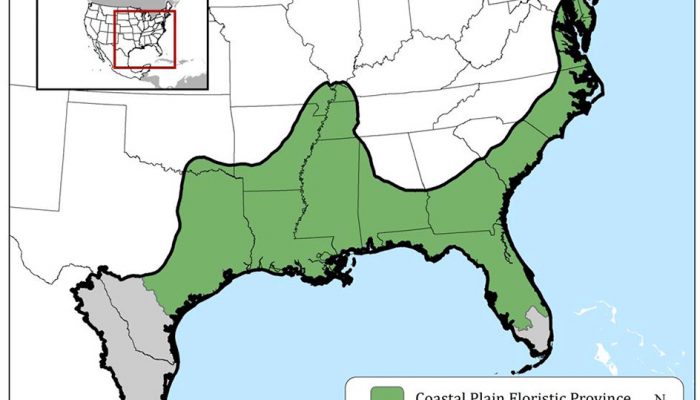Biodiversity Hotspots
By Musa Jundi
All around the world reside biodiversity hotspots, regions with high levels of biodiversity, and the majority of those regions are threatened by numerous stressful factors including land development, deforestation, and climate change. In several instances, certain areas hold a tremendous number of unique species that are isolated from the rest of the world. For example, roughly 90% of all animal and plant species in Madagascar are endemic1, which makes conservation efforts a high priority in that region. Unfortunately, it’s also estimated that Madagascar has lost approximately 90% of its original total forest area.2 Many other regions face the same threat of biodiversity loss, and the southeastern United States is no exception.
In an article in Diversity and Distributions3, scientists identify the North American Coastal Plain (NACP), which spans from East Texas to the East coast, as a biodiversity hotspot. This region has been largely overlooked, namely because of ill-conceived notions and misconceptions regarding its ecology and climate. Because of the lack of altitude differences and heterogeneous climate, both of which favor evolution and retention of endemic species, scientists paid little attention to this area. It is important that we do not overlook regions that are currently thought to be less diverse, and given this example with the NACP, there may be other critical areas of high biodiversity that have been ignored.
As a Floridian, I think we take for granted the fact that we live in a species-rich, diverse area of the world. Florida hosts many delicate ecosystems and important species, many of which are under constant threat by the ever-increasing rate of habitat destruction. The Florida panther is perhaps one of the most familiar examples of species that are critically endangered by habitat destruction and fragmentation. As an apex predator, the Florida panther helps control populations of other species, some of which can be destructive to the environment (e.g. feral hogs). The conservation of animals and plants goes beyond just the emotional appeal. Conservation promotes sustainable ecosystems, more avenues of research, and unique economic and educational opportunities.
For more information about the NACP, visit here.
1.) Hobbes and Dolan (2008) p. 517
2.) World Wildlife Fund (2001). “Madagascar subhumid forests”. National Geographic Society.
3.) Noss, et al. (2015). “How global biodiversity hotspots may go unrecognized: lessons from the North American Coastal Plain”. Diversity and Distributions.


